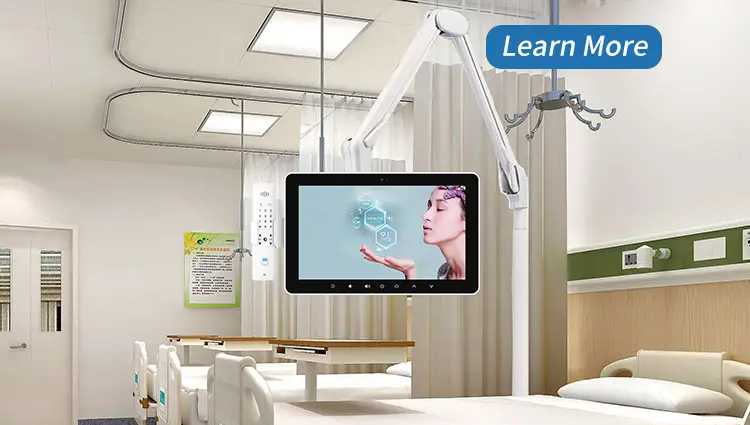In the realm of healthcare technology, bedside terminals have emerged as revolutionary tools, reshaping the landscape of patient care. These sophisticated devices not only enhance communication between healthcare providers and patients but also offer a myriad of features aimed at improving patient experience and outcomes. In this comprehensive guide, we delve into the intricacies of bedside terminals, exploring their functionalities, benefits, and impact on healthcare delivery.
Understanding Bedside Terminals
Bedside Terminal: The Cornerstone of Modern Healthcare
In today’s digital era, bedside terminals serve as the cornerstone of modern healthcare facilities. These multifunctional devices, typically mounted near patients’ beds, integrate various technologies to streamline communication, access medical records, and facilitate entertainment and education.
The Evolution of Bedside Terminals
From Basic Communication Tools to Comprehensive Care Platforms
Gone are the days when bedside terminals merely served as communication tools. With advancements in technology, modern bedside terminals have evolved into comprehensive care platforms, offering an array of features such as:
- Electronic Health Records (EHR) Integration:
Seamless access to patients’ medical records, allowing healthcare providers to retrieve vital information promptly. - Telemedicine Capabilities:
Facilitating virtual consultations and remote monitoring, thereby expanding access to healthcare services. - Entertainment and Education:
Providing patients with entertainment options, educational resources, and personalized health information to enhance their hospital experience.
The Benefits of Bedside Terminals
Enhancing Patient Experience and Outcomes
The adoption of bedside terminals has yielded significant benefits for both patients and healthcare providers:
- Improved Communication:
Bedside terminals facilitate real-time communication between patients and healthcare staff, fostering a collaborative care environment. - Enhanced Patient Engagement:
By empowering patients with access to their medical information and educational resources, bedside terminals promote active participation in their healthcare journey. - Efficient Workflow:
Streamlined access to electronic health records and communication tools optimizes workflow efficiency, allowing healthcare providers to deliver timely and personalized care. - Reduced Readmission Rates:
Through remote monitoring and telemedicine capabilities, bedside terminals enable early intervention and proactive management, ultimately reducing the likelihood of hospital readmissions.
Bedside Terminal: Addressing Common Concerns
Privacy and Security Considerations
While bedside terminals offer numerous benefits, concerns regarding patient privacy and data security remain paramount. Healthcare facilities must implement robust security measures, including encryption protocols and access controls, to safeguard patient information and mitigate the risk of unauthorized access or data breaches.
FAQs (Frequently Asked Questions)
How do bedside terminals improve patient satisfaction?
Bedside terminals empower patients with access to entertainment, educational resources, and communication tools, thereby enhancing their overall hospital experience.
Can bedside terminals integrate with existing electronic health record systems?
Yes, modern bedside terminals are designed to seamlessly integrate with electronic health record systems, allowing healthcare providers to access patients’ medical records efficiently.
Are bedside terminals only used in hospitals?
While bedside terminals are commonly deployed in hospitals, they can also be utilized in long-term care facilities, rehabilitation centers, and other healthcare settings to improve patient care delivery.
What measures are in place to ensure patient data confidentiality?
Healthcare facilities adhere to stringent privacy regulations and employ encryption protocols, access controls, and regular security audits to safeguard patient data stored on bedside terminals.
How do bedside terminals contribute to healthcare cost reduction?
By streamlining communication, enhancing workflow efficiency, and facilitating remote monitoring, bedside terminals help reduce healthcare costs associated with prolonged hospital stays, readmissions, and unnecessary procedures.
Can patients personalize their bedside terminal experience?
Yes, patients can personalize their bedside terminal experience by accessing entertainment options, educational content, and interactive features tailored to their preferences.
Conclusion
In conclusion, bedside terminals represent a paradigm shift in healthcare delivery, offering a comprehensive solution to enhance patient care, communication, and engagement. As technology continues to evolve, bedside terminals will play an increasingly integral role in optimizing healthcare delivery and improving patient outcomes.

